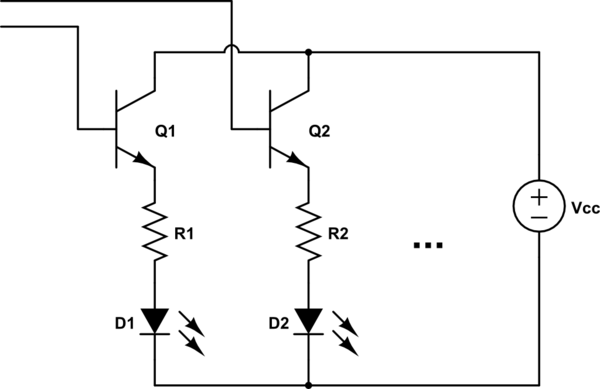I'm using an existing keypad with 8 LEDs that source power. I was hoping to use and LED driver of sorts, but all of the ones I find only refer to sinking power. Is it possible to use these drivers to source current, and if so is there a way of understanding how to convert the sinking specifications to sourcing? The Vcc for my system is 3.3V and LEDs are 3.4V and 20mA
Was looking at this TI TLC5917 driver.
The LEDs on keypad are Lite-On LTST-C150TBKT.
The circuit is setup like

simulate this circuit – Schematic created using CircuitLab

